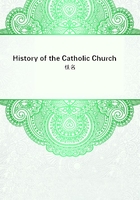
第307章
A royal proclamation was issued (1661) ordering all Jesuits and priests to depart from the kingdom immediately; the laity were commanded to attend the Protestant service under threat of severe penalties, students in foreign colleges were ordered to return at once, and Catholic schoolmasters were forbidden to teach within the kingdom. Backed by all the powers of the crown, Knox and his fellow bishops set up a terrible inquisition in every part of the country, and spared no pains to hound down the clergy and those who entertained them, to drive the poorer classes by brute force into the church, to harass the better classes by threats and examinations, and to wipe out every vestige of the Catholic religion. Cornelius O'Devany, a Franciscan, who had been appointed Bishop of Down and Connor (1582), was arrested together with a priest who accompanied him, was tried in Dublin, and was hanged, drawn, and quartered (1612).[24] Almost at the same time the Protestant Bishop of Down and Connor was accused of "incontinence, the turning away of his wife, and taking the wife of his man-servant in her room, subornation of witnesses," and alienation of the diocesan property. He fled from his diocese, was arrested, degraded, and died in prison. The Archbishop of Glasgow and Bishop Knox of Raphoe, himself a Scotchman, hastened to London to secure the appointment of one of their countrymen as his successor; but Chichester wrote that though he would not say that Scotchmen were not good men, he could aver that they were "hot-spirited and very griping"and "such as were not fit for these parts."[25] Several attempts were made to arrest Dr. Eugene Matthews or MacMahon, who had been transferred (1611) by the Pope from Clogher to the Archbishopric of Dublin. He was detested especially by the government, because it was thought that he owed his promotion to the influence of O'Neill, who was also suspected of having had a voice in the appointment of the learned Franciscan, Florence Conry to Tuam (1609).[26] During the course of these years jurors were threatened by the crown lawyers with the Star Chamber unless they found a verdict of guilty, and were sent to prison for not returning a proper verdict against those accused by the Protestant ministers of not attending church; wards of court though Catholic were committed to the guardianship of Protestants, and in every grant a special clause was inserted "that the ward shall be brought up at the college near Dublin (Trinity College) in English habit and religion;" the Irish were excluded from all offices; men of no property were appointed as sheriffs; and the fines for non-attendance at church were levied strictly. Instead of being applied to the relief of the poor they found their way, according to the Catholic Lords of the Pale, into the pockets of the ministers. In reply to this last charge Chichester asserted that they were not given to the poor, because all the poor were recusants, but they were employed "in the rebuilding of churches, bridges, and like charitable purposes."[27]
Yet Knox did not succeed in uprooting the Catholic faith in Ireland.
According to a report furnished (1613) to the Holy See by Mgr.
Bentivoglio, Internuncio at Brussels, whose duty it was to superintend affairs in Ireland, heresy had made little progress even in the cities, while the nobility and gentry were nearly all Catholic. There were then in Ireland about eight hundred secular priests, one hundred and thirty Franciscans, twenty Jesuits, and a few Benedictines and Dominicans, of whom the Franciscans were held in special esteem. The best of the secular clergy were those who came from Douay, Bordeaux, Lisbon, and Salamanca.[28] In the following year (1614) Archbishop Matthews of Dublin held a provincial synod at Kilkenny at which many useful regulations were made regarding the conduct of the clergy, preaching, catechising, the celebration of Mass, the administration of the sacraments, the relations between the secular and regular clergy, the reading of controversial literature, and the observance and number of fast-days and holidays.[29] In the province of Armagh Dr. Rothe, acting under authority received from Peter Lombard, convoked a provincial synod at Drogheda (1614). It was attended by vicars from the several dioceses and by representatives of the various religious orders, and passed regulations somewhat similar to those enacted at Kilkenny. In both synods the clergy were warned to abstain from the discussion of state affairs and from disobedience to the civil rulers in temporal matters. At Drogheda the new Oath of Allegiance framed by James I. was condemned as being opposed to faith and religion;Catholics were commanded not to have recourse to prevarication or wavering in regard to it, but to reject it openly, and were warned against attendance at divine worship in Protestant churches even though they had previously made a declaration that they meant only to pay a mark of respect to the civil rulers.[30] At the same period the Franciscans and Dominicans founded new colleges on the Continent, at Douay and Lisbon, to supply priests for their missions in Ireland.
During the later years of Elizabeth's reign the disturbed condition of the country made it impossible to convene a Parliament, and after the accession of James I. his advisers feared to summon such a body lest they might be unable to control it. Still, they never lost sight of the advantage it would be to their cause could they secure parliamentary sanction for the confiscation and plantation of Ulster, and for the new methods employed for the punishment of recusants.